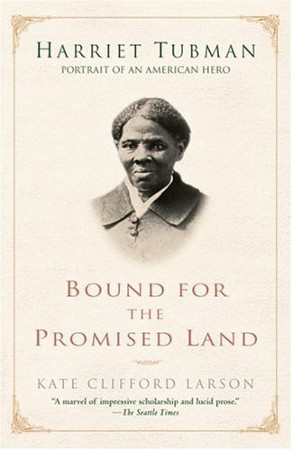During her last two years in
slavery, Harriet Tubman worked for Dr. Anthony C. Thompson, one of Anthony
Thompson’s sons. The Ross family had maintained close ties to the Thompson
family over the years: Ben Ross had been liberated through a provision in
Anthony Thompson’s will in 1840, and his son Dr. Thompson frequently hired the
Ross children to work for him. But on 7 March 1849, Tubman’s legal owner, Edward
Brodess, died on his farm at Bucktown at the age of forty-seven, creating havoc
and turmoil in his slave quarters. Brodess’s estate was deeply in debt, placing
Tubman and her remaining siblings at even greater risk of being sold to satisfy
creditors’ demands for payment. Brodess had already sold three of Tubman’s
sisters – Linah, Soph and Mariah Ritty – so the Ross children knew what their
future chances of sale would be.
On 17 September 1849,
Tubman and her brothers, Ben and Henry, made a run for freedom in the North
while working for Thompson on his 2200 acre plantation at Poplar Neck in
Caroline County, MD.. They stayed hidden nearby for approximately three weeks,
but were overcome with fear and returned to the Eastern Shore. Shortly
thereafter, Tubman struck out alone, taking her own liberty. She tapped into an
Underground Railroad that was already functioning well on the Eastern Shore.
Traveling by night, using the North Star and instructions from white and black
helpers, she found her way to Philadelphia through Delaware and possibly New
Jersey. She sought work as a domestic, saving her money to help the rest of her
family escape. In December 1850, Tubman executed her first mission, the rescue
of her niece Kessiah Jolley Bowley and Bowley’s two children, James Alfred and
infant Araminta. With the help of Bowley’s free husband, John, Tubman
turned to the maritime networks she and her family knew so well to help arrange
for Bowley’s liberation. In a daring escape sequence, John secretly stole Kessiah and their children from the auction block in Cambridge, Maryland, and sailed
them in a small boat up the Chesapeake to Baltimore, where Tubman was waiting
to hide them among friends and relatives. Within a few months she returned to
Baltimore and helped her youngest brother Moses find his way to freedom as
well.
By 1854 Tubman was
firmly ensconced in the abolitionist and Underground Railroad networks that
centered on Philadelphia, New York, and Boston. Through her relationships with
abolitionists and Underground Railroad agents William Still of Philadelphia,
Thomas Garrett of Wilmington, Delaware, Stephan Myers in Albany, Jermain Loguen
in Syracuse, and Frederick Douglass in Rochester, New York, Tubman successfully
ferried approximately seventy individuals, including her brothers, parents, and
other family and friends, to freedom. She could not accompany all who sought to
escape from the Eastern Shore of Maryland, but through detailed instructions
provided by her, approximately fifty more found their way to freedom
independently. The Fugitive Slave Act of 1850 left most refugee slaves
vulnerable to recapture, however, and many fled to the safety and protection of
Canada. Indeed, Tubman brought many of her charges to St. Catharines, Ontario,
where they settled into a growing community of freedom seekers. Her dangerous
missions won the admiration of black and white abolitionists throughout the
North who provided her with funds to continue her activities.
Tubman used
disguises and various ruses to affect some of her escapes. Dressed as a man, an
old woman, and even as a middle-class free black in silk dresses, she remained
undetected by those who might enslave her again. She carried a revolver both as
protection from slave catchers and to urge on freedom seekers too weary to move
along. She often varied her route; some paths to freedom were by water, others
overland through dangerous slaveholding territory. Tubman had a trustworthy
network of safe houses, from Dorchester County, Maryland, through Delaware,
Pennsylvania, New York and Canada, where brave black and white sympathizers
risked their own lives to help hide freedom seekers. On Christmas day, 1854,
she brought away her three brothers, Ben, Henry, and Robert; two years later
she brought away her parents, who were at risk of arrest for aiding other runaway
slaves. Tubman tried, unsuccessfully, to bring away her remaining sister Rachel
and Rachel’s two children, Ben and Angerine, throughout the 1850s. On her last
rescue mission in December 1860, Tubman arrived in Dorchester County only to
discover that Rachel had died. Unable to retrieve Rachel’s children, Tubman
instead brought away the Ennals family, including a small infant who had to be
drugged with paregoric to keep it quiet as they hid in the woods as slave
patrols passed by.


